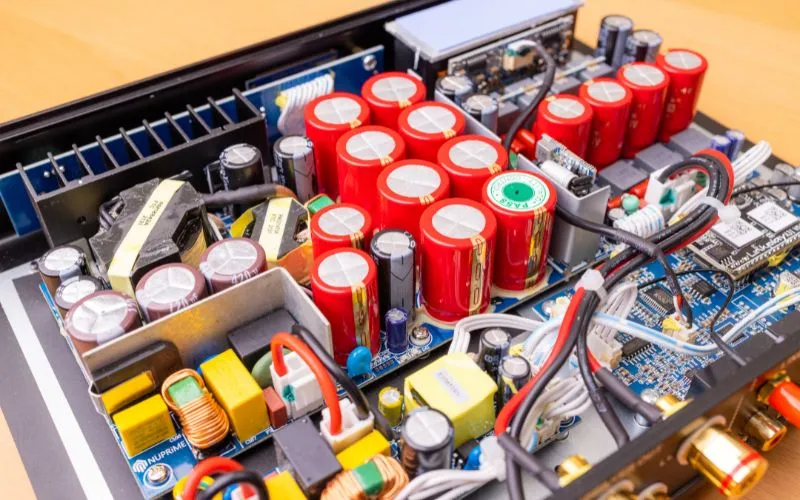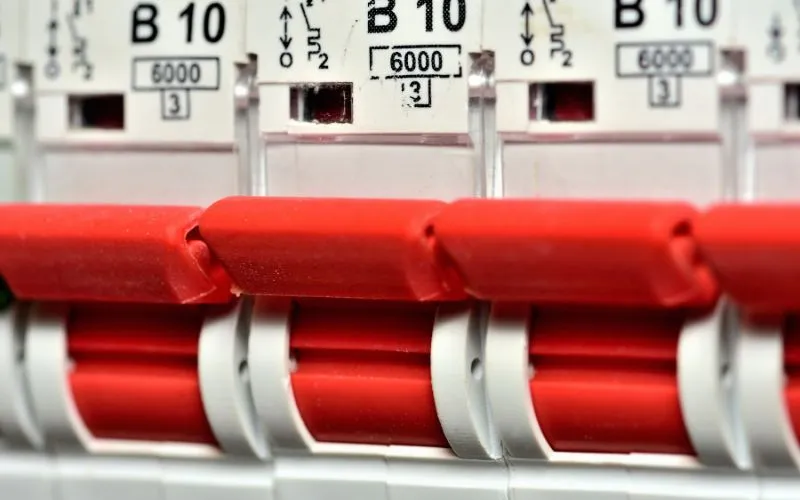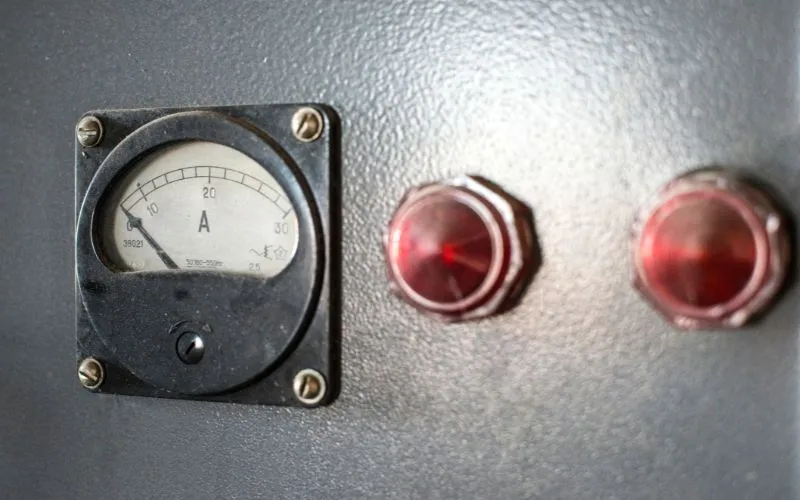
Dive into the heart of signal amplification with an in-depth exploration of operational amplifiers (op-amps) – an essential workhorse in electronics and circuit design! Discover how a small component can have a big impact on sound systems, communications devices, and more. In this blog post, we'll show you the practical applications of operational amplifiers and show you how they shape electronic circuits and define your everyday devices. Get ready to gain unforgettable insights into the ever-evolving world of electronics!
Operational amplifiers are used in numerous electronic applications, including amplifiers, oscillators, filters, comparators, voltage regulators, and instrumentation circuits. Additionally, operational amplifiers can be used for tasks such as voltage follower, summing amplifier, integrator/differentiator, and signal conditioning. Understanding the capabilities of op amps will help you select the right type of op amp for your application and ensure optimal performance.
Essential aspects of operational amplifiers in circuit design

Understanding the essential aspects of operational amplifiers (OP amplifiers) is crucial when designing electronic circuits. Operational amplifiers are versatile devices that can play a critical role in diverse applications such as amplification, filtering, and signal conditioning. To use operational amplifiers effectively in circuit design, several important aspects must be taken into consideration.
An important factor is the open circuit gain of an op amp. This refers to the gain the amplifier delivers when no feedback is applied. The idle gain must be large enough to ensure accurate signal amplification. High open-loop gain allows for better accuracy and linearity of the output signal.
Another aspect to consider is the input impedance of the operational amplifier. Input impedance indicates how much the operational amplifier influences the input signal source. Ideally, it should be significantly greater than the signal source impedance to avoid load effects and maintain an accurate representation of the signal. Using high-resistance resistors in operational amplifier circuits can help achieve this.
Furthermore, understanding the effects of negative feedback on op-amp behavior is critical to circuit design. Negative feedback is a technique that stabilizes and improves the performance of operational amplifiers by feeding a portion of the output signal back to its input with the appropriate polarity. Using negative feedback helps reduce distortion, increase stability, and improve linearity in amplification circuits.
It is also important to consider the effects of the power supply on circuit design. Power supply noise and signal ripple can cause unwanted interference to the operation of the operational amplifier. Connecting bypass capacitors to each power and ground pin can help mitigate these effects and provide a cleaner, more stable power supply for the op amp.
Furthermore, in practice, operational amplifiers have non-ideal characteristics such as a finite input impedance and a non-zero output impedance. Understanding these characteristics allows designers to minimize unwanted effects and optimize circuit performance. By incorporating techniques such as buffering or impedance matching, designers can mitigate issues related to non-ideal op-amp behavior.
To understand the essential aspects of operational amplifiers in circuit design, factors such as open-loop gain, input impedance, negative feedback, power supply effects, and non-ideal characteristics must be considered. By carefully evaluating these aspects and applying appropriate design techniques, the full potential of operational amplifiers in electronic circuits can be realized.
Influence of finite input and output impedances
Finite input and output impedances play an important role in operational amplifier applications. Input impedance refers to the resistance that the input terminals of an operational amplifier offer to the signal source. Output impedance, on the other hand, represents the resistance that the amplifier's output terminals offer to the load it is driving.
The limited input impedance of an operational amplifier affects its ability to effectively accept signals from various sources without changing its characteristics. The input impedance must be high as it allows minimal current to flow to the amplifier and reduces potential loading effects on the signal source. High impedance resistors are often used in operational amplifier circuits to obtain higher input impedance.
On the other hand, output impedance affects how well an op amp can drive a load without significant signal degradation. A low output impedance ensures minimal voltage drop across the amplifier's output terminals when connected to a load. If the output impedance is too high, it can compromise signal integrity and result in inaccurate voltage levels across the load.
Understanding and dealing with these finite input and output impedances is critical to the optimal performance of operational amplifier circuits. By carefully selecting component values and using techniques such as buffering or impedance matching, designers can mitigate load effects on the signal source and ensure accurate signal delivery to loads.
For example, imagine you are designing an audio amplifier circuit that uses an operational amplifier to amplify the audio signal. If the op amp's input impedance is too low, it will draw too much current from the audio source, causing distortion and loss of signal quality. However, by selecting an operational amplifier with high input impedance or using appropriate resistors in the circuit, these problems can be avoided and faithful amplification can be achieved.
By considering the finite input and output impedances of an op-amp, designers can maximize the fidelity and efficiency of their circuits while minimizing possible signal degradation or loading effects.
- In operational amplifier applications, it is important to consider finite input and output impedances. A high input impedance is desirable to minimize current flow from the signal source, while a low output impedance ensures minimal voltage drop across the amplifier outputs when connected to a load. By selecting appropriate component values and using techniques such as buffering or impedance matching, designers can mitigate load effects on the signal source and ensure accurate signal delivery to loads, ultimately maximizing signal fidelity and efficiency. circuit.
Dealing with non-optimal features and bugs
Although operational amplifiers (operational amplifiers) are widely used in electronic circuits, they are defective components with suboptimal characteristics and errors. Understanding and mitigating these aspects is critical to developing reliable and accurate circuits.
A non-ideal characteristic of operational amplifiers is their limited input impedance. This means that when connected they draw a small amount of current from the signal source, which can affect the voltage at the source. To minimize this influence, it is important to choose an operational amplifier with a sufficiently high input impedance compared to the source impedance. This way we can guarantee minimum distortion in the circuit.
For example, imagine designing a sensor interface circuit with a low input impedance operational amplifier. If the sensor has a high output impedance, this can result in significant measurement errors due to the voltage drop across the source impedance caused by the op amp's input current draw. However, we can mitigate this problem by selecting an op amp with high input impedance and obtaining accurate measurements.
Another non-ideal characteristic is the limited gain of operational amplifiers. Ideally, op amps have a very high open circuit voltage gain. However, practical limitations result in limited gains that may vary depending on frequency or temperature. This can cause gain errors and affect circuit performance. Compensating for these variations may require careful design considerations, such as: B. the use of feedback networks or compensation capacitors to maintain stability under different operating conditions.
Additionally, operational amplifiers have input bias currents and input offset voltages that contribute to errors in circuit operation. Input bias currents flow into or out of the inputs, creating voltage drops across the source resistors that can affect signal accuracy. Input offset voltages result in DC offsets, which can result in incorrect signal processing or biased outputs.
To deal with these non-ideal features and errors, developers use several techniques. These include the use of matched resistors to minimize input bias currents, zero offset techniques to mitigate offset voltages, and the implementation of temperature compensation methods. By carefully selecting components and configuring the feedback network, designers can minimize these errors and optimize circuit performance.
Now that we know how to deal with non-ideal characteristics and errors in operational amplifiers, let us now explore the practical applications of operational amplifiers in electronic circuits.
Practical application of operational amplifiers in circuits

Operational amplifiers are versatile components used in numerous applications in electronic circuits due to their ability to amplify signals, perform mathematical operations, and maintain stability within specific input ranges. Let's take a look at some practical applications of operational amplifiers:
- Boost : A common application of operational amplifiers is to amplify weak input signals to a desired output level. This is particularly useful in audio amplifiers, where operational amplifiers amplify weak audio signals from sources such as microphones or musical instruments before driving speakers.
- Signal Conditioning : Operational amplifiers can be used for signal processing, for example to filter, rectify or smooth signals. In sensor interface circuits, for example, operational amplifiers can amplify and filter signals from temperature or pressure sensors before they are further processed.
- comparator : Operational amplifiers can determine whether one signal is greater than or equal to another. This makes them suitable for applications such as surge protection or threshold detection in various systems.
- Voltage reference : Operational amplifiers with stable output voltages can serve as voltage references in electronic circuits. To ensure accuracy, they provide a constant, precise voltage that other components can relate to.
- Oscillators : By incorporating feedback networks with appropriate frequency-selective components, operational amplifiers can produce oscillating waveforms to create clocks, timing systems, or frequencies for various applications.
- Active Filters : Operational amplifiers can be used to construct active filters, with their high input impedance and low output impedance allowing accurate design of frequency response curves. This is particularly advantageous in applications such as audio equalizers or data signal filters.
Keep in mind that these are just a few examples of the many uses of operational amplifiers in electronic circuit design. The possibilities are countless and with creativity and innovation, operational amplifiers can be adapted to specific circuit requirements.
Different Uses of Different Types of Op Amplifiers
Operational amplifiers (operational amplifiers) come in different types, each with unique characteristics that make them suitable for different applications. Understanding these differences can help engineers design electronic circuits more effectively. Let's explore the different uses of different types of op amps:
A commonly used type is the inverting operational amplifier . As the name suggests, it produces an inverted output compared to its input. This configuration is useful for applications such as signal amplification and wave shaping. For example, if you have a low-amplitude signal that needs to be amplified, you can use an inverting op-amp to get the gain you want.
Imagine you need to amplify a weak audio signal from a microphone to drive a speaker. An inverting operational amplifier circuit with appropriate feedback resistors can increase signal amplitude without compromising sound fidelity.
Another widely used operational amplifier configuration is the non-inverting operational amplifier which maintains the same polarity between the input and output signals. This type is often used when a higher input impedance is required or when signals from voltage dividers or sensors need to be buffered.
For example, consider a scenario where you want to measure voltage on a temperature sensor and minimize the effects of stress on the sensor. You can buffer the signal using a non-inverting op amp with high input impedance, thus avoiding altering the original reading.
Additionally, certain specific operational amplifier configurations are tailored for specific purposes. Summing amplifier allows multiple inputs to be combined into one output by summing their voltages with different weights through resistors. Voltage follower has unity gain (gain value 1) and replicates its input exactly at the output and serves as an isolation barrier between two circuits with different voltage requirements.
By understanding these different uses of different types of op amps, engineers can select and configure the appropriate op amp to optimize their circuit designs for specific applications.
Now that we've explored the different uses of different types of op amps, let's focus on another important aspect of electronic circuit design: mitigating the effects of power supply in op amps.
Mitigating Power Supply Effects on Op Amplifiers

Operational amplifiers are very sensitive to fluctuations and disturbances in their power supply. These fluctuations can affect its performance and introduce noise and errors into the circuit's operation. However, there are ways to mitigate the impact of power supply and ensure reliable functionality. Let's take a look at some techniques:
Power supply noise often arises from several sources, such as: B. switching regulators or other components that use the same power supply. To counteract this, bypass capacitors can be connected and grounded to each op amp power supply pin. These capacitors act as memory and provide the op amp with clean, stable power while reducing high-frequency noise.
Consider a scenario where an op-amp circuit is connected to a DC motor controller that produces significant switching noise. By strategically placing bypass capacitors with appropriate capacitance values close to the op amp power supply pins, the noise generated by the motor controller can be significantly reduced, resulting in better signal integrity.
Voltage ripple – caused by components with time-varying currents drawing power from the same supply lines – can also affect op-amp behavior. Just like bypass capacitors, properly sized capacitors can help smooth out these voltage fluctuations and minimize ripple effects.
It is important to note that while capacitors can mitigate certain impacts on the power supply, they must be carefully selected based on factors such as frequency response requirements and power consumption. The size and type of capacitors used must match the specific requirements of the circuit design.
Engineers can improve the stability, reliability, and performance of operational amplifier circuits by using these techniques to mitigate power supply effects, ensuring accurate operation in a variety of applications.
Extended Use: Drawing current for operational amplifiers

One of the lesser-known but extremely useful uses of operational amplifiers (op-amps) is their ability to draw current into the circuit. Although operational amplifiers are generally considered devices that amplify signals and provide voltage gain, they can also draw power from an external source, allowing for enhanced functionality in various electronic circuits.
When an operational amplifier receives power from an external source, it can serve as an active element in a circuit, performing tasks beyond traditional amplification. This technique is particularly useful when additional power is required or when more power is needed to drive a specific load than the operational amplifier alone can provide.
For example, imagine a scenario where a circuit requires a higher output current than the op-amp can directly provide. By connecting the load to the output of the op amp and using external power sources such as transistors or other devices, the op amp can draw additional current to effectively drive the load. This configuration allows the op amp to act as a more powerful driver and overcome limitations that may arise due to its internal design limitations.
Imagine designing an audio amplifier circuit intended to deliver high-quality sound through speakers. In this case, you can choose an operational amplifier with excellent voltage characteristics but limited ability to supply large amounts of current. By supplying additional power to the op amp from external sources, you ensure that your audio amplifier has enough power to effectively drive your speakers for optimal audio performance.
It is important to note that incorporating additional current into an op amp brings with it some considerations. Firstly, care must be taken to ensure stability and avoid vibrations or other unwanted effects. Adding external components such as feedback resistors and capacitors can help maintain stability by drawing current to the op amp.
Additionally, it is important to select appropriate external power supplies based on circuit requirements. These sources must be capable of supplying the required current without degrading the operational amplifier's performance or exceeding its maximum ratings.
In short, powering an op-amp allows for expanded use that extends the capabilities of these versatile components. By using external power sources, operational amplifiers can provide higher output currents, drive demanding loads, and improve the overall functionality of electronic circuits. However, to ensure optimal performance, component stability and selection must be carefully considered.

